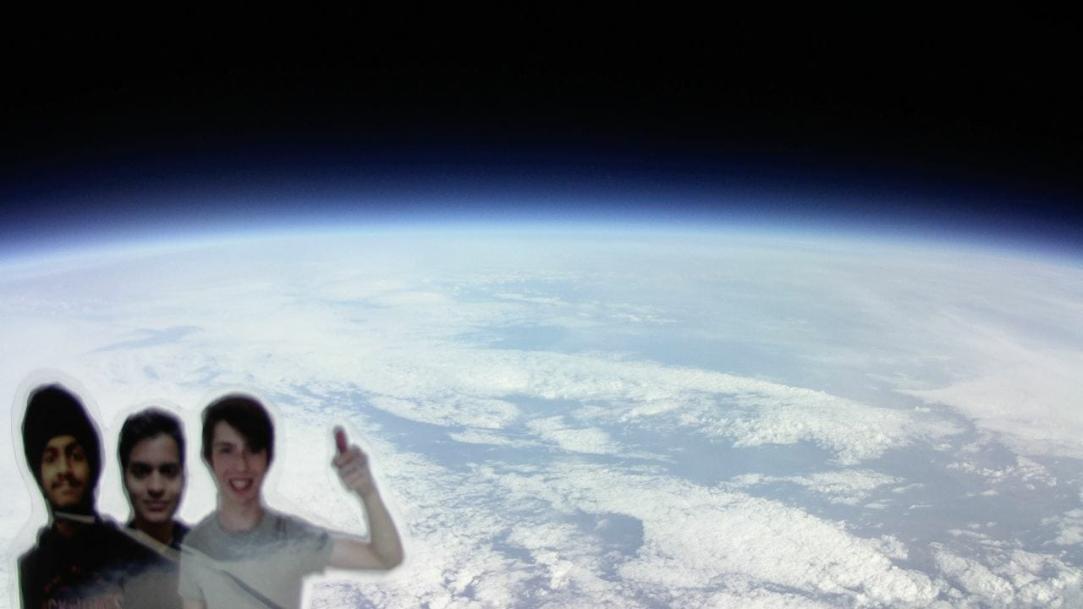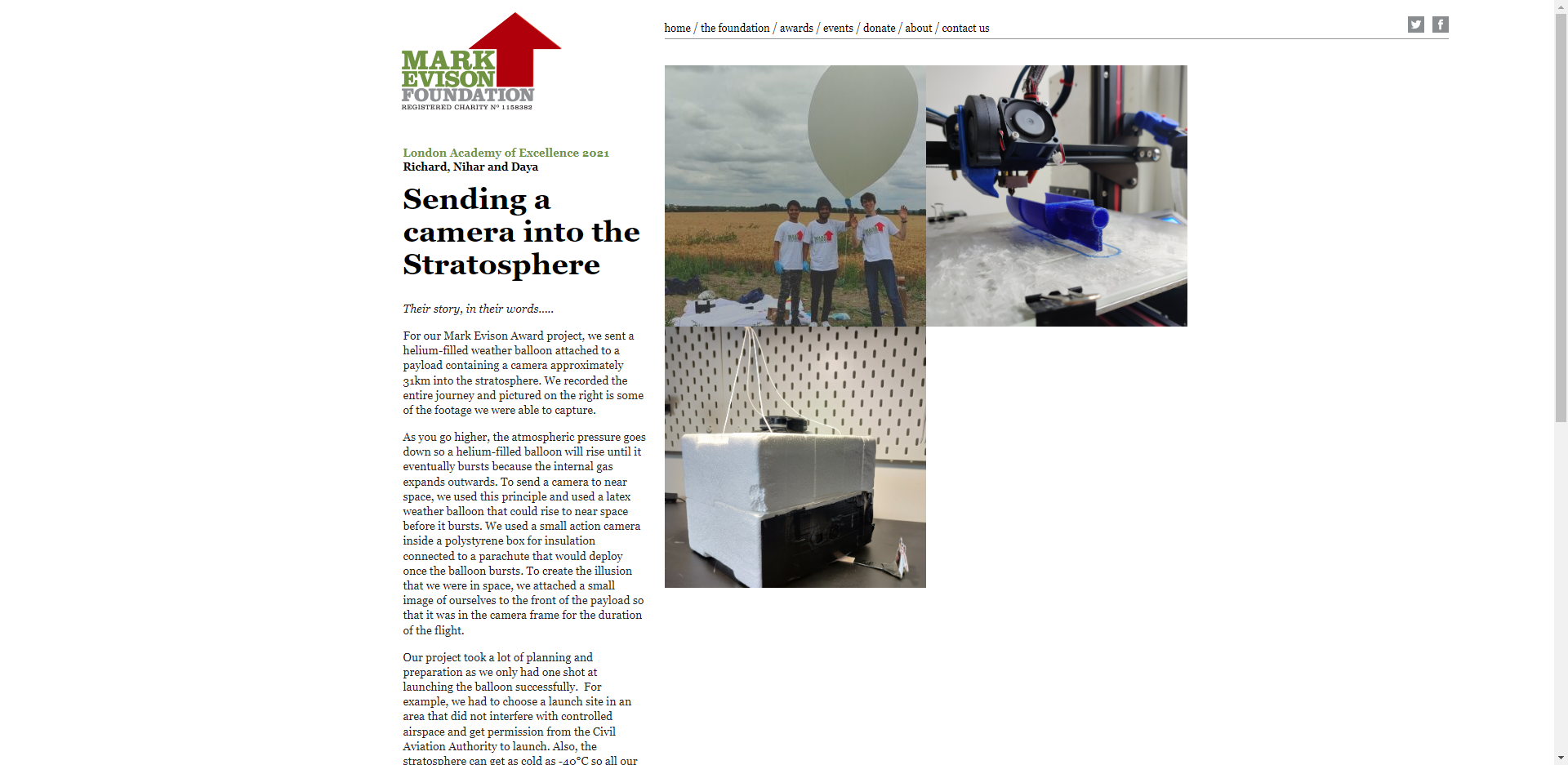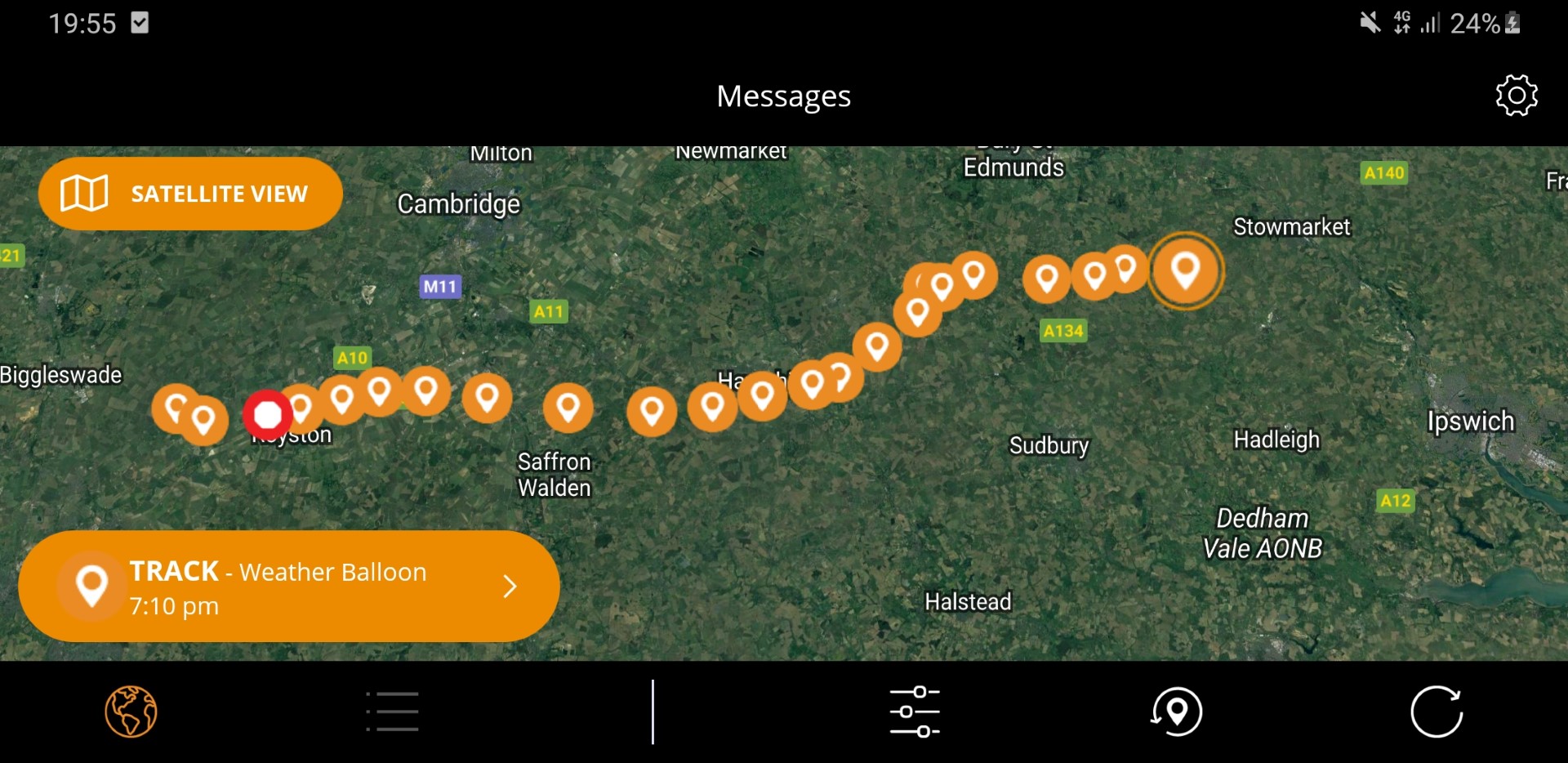What's it about?

My friends, Richard and Nihar, and myself wanted to try and record the path of a High Altitude Balloon (HAB) as it ascended into space. Considering myself exceptionally unfit, it's as close as I can get to space (rotten luck). Starting from Bigglsewade (South of, and between, Cambridge and Bedford), the balloon travelled all the way to a point between Bury St Edmund's and Ipswich. All of this was done with a budge of £500, including travel costs, and equipment cost; all of this was provided by the Mark Evison Foundation.
The Reward

The Mark Evison Award is an award given to students aged 16-18 to complete a task independent of adults (although technically we had to use my parents to drive us). The award doesn't require much of a background to achieve (not to diminish it's prestige). Instead, in order to recieve the grant (up to £500), you must, in a away, do half of the project. That is, demonstrate that you know what you will spend the money on, how to organise your time, and that you have the relevant expertise to carry the project out. The other point is that the project needs to be hard; not a huge undertaking, though some have gone as far as climbing Everest, but difficult enough to be a challenge.
The Project

After buying the resources from RandomEngineering, 3d printing our fittings, applying for permission from the Civil Aviation Authority, and renting out the helium (which we transported in a suitcase), we decided to launch the balloon on the 20th of August 2021. We took the train to Bigglsewade and set up; I'll save you the details. Needless to say the balloon inflated without a hitch, and we released it. My parents then arrived, and then using GPS, we tracked it for 6-8 hours. It landed in a field, where we went to retrieve it. All of it was intact. You can view the footage here:
Space officially starts 100km up, which, as space travel goes, is a pretty good choice. Not that it's the intention, but since most aircrafts (blimps included) cannot go beyond 30km due to the drop in air density, you draw a line between crafts that can go through a vacuum, and those that depend on air. Of course, our balloon depended on air (helium is lighter... etc etc). So whilst a measily 35km may seem a poor height, considering over 99% of the atmosphere's mass was below it, I'd consider it to be nearer the edge of space than you may think.